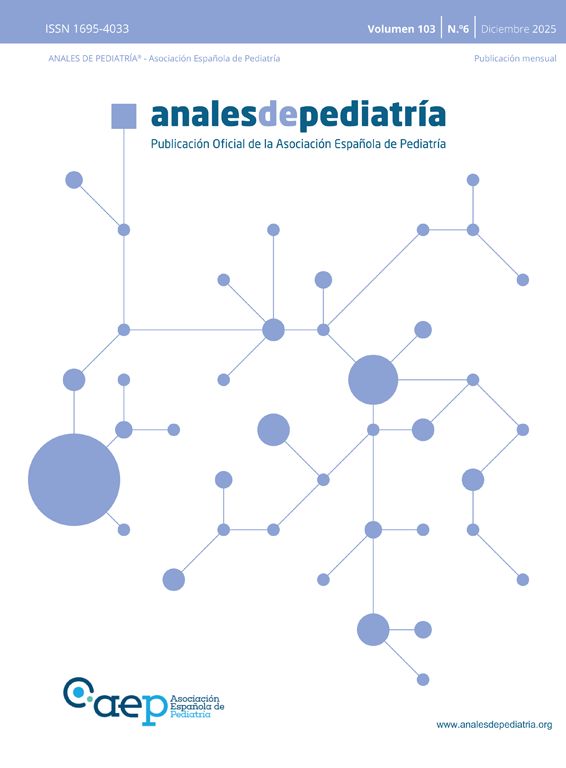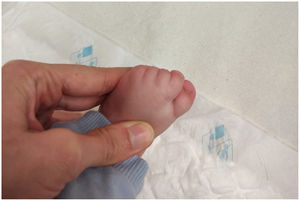We present the case of a male infant aged 2 months born preterm at 32 weeks of gestational age, the pregnancy had been monitored, with diagnosis of amniotic band without repercussions. There were no complications during delivery or in the perinatal period. In the evaluation at birth, the sole detected abnormality was the amputation of the distal phalanx of the third and fourth left toes (Fig. 1). The patient had been admitted to the neonatal unit due to prematurity and was discharged at 25 days post birth without incident.
At 2 months post birth, he was brought to the outpatient clinic for follow-up, when a ring of fibrous tissue was detected in the abdomen (Figs. 2 and 3).
Amniotic band syndrome is a term encompassing a wide spectrum of congenital anomalies secondary to the presence of amniotic bands. The bands cause lesions due to constriction or amputation, more frequently affecting distal portions of the extremities or digits. In the most severe cases, they can cause amputation of an entire limb or foetal death, depending on the affected area and the timing during gestation at which the lesion develops. Few articles in the literature1,2 have described amniotic bands involving the abdomen,3 and it is rare for the involvement of this location to not cause severe injury or death.







